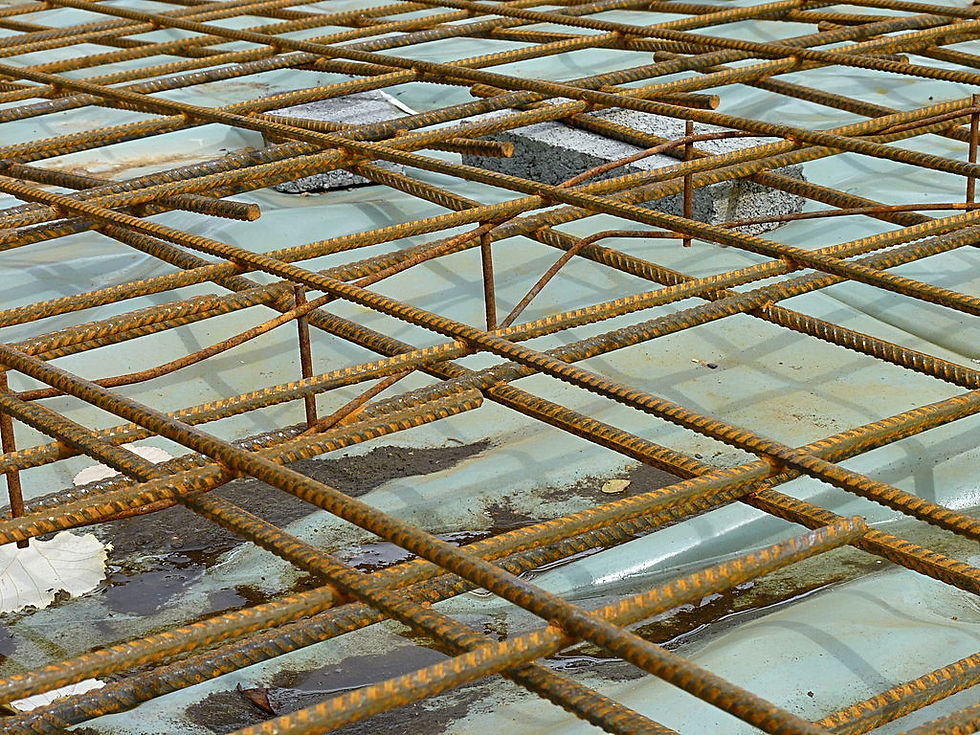Plain concrete is unsuitable for most structural purposes due to its inability to sustain tensile and shear stresses induced by wind, earthquakes, vibrations, and other forces. The discovery of reinforced concrete in the nineteenth century transformed the construction industry, and concrete became one of the most widely used building materials on the planet. This blog explains the importance of reinforcement for concrete, and the things to bear in mind while placing the reinforcement bars.
What is Reinforcement in Construction?
Reinforcement in concrete can be a single steel rod (known as bars) or a series of rods bent to a set requirement and tied with stirrups according to the reinforcement drawings. The most common rebar diameters employed on site are 6, 10, 12, 16, 20, 25, and 32 millimetres. The steel reinforcement used in construction is of four types. They are hot rolled deformed bars, cold worked steel bars, mild steel plain bars, and prestressed steel bars.

Cover For Reinforcement
An appropriate concrete cover is absolutely essential for the steel reinforcement, to protect the steel bars from corrosion. As soon as humid air comes in contact with the steel reinforcement inside the concrete, the corrosion starts, leading to rusting and eventually disintegration of the affected part. This can lead to a serious weakening of the concrete beam or slab, eventually leading to their collapse.
Points To Remember for Reinforcement Placement
All reinforcement bars shall be clean and free from mill scales, dust, loose rust and coats of paints, oil or other coatings which may destroy or reduce the bond between the rebars and concrete.

The rebars crossing one another shall be tied together at every intersection with two strands of binding wire of 16 to 20 SWG. They shall be twisted tight so as to make the steelwork rigid and not get displaced during concreting.
Joints in concrete reinforcement should be avoided as much as possible, but if lapping is unavoidable, it should be staggered so that only a small portion of the overall reinforcement is lapped at any given segment. The minimum lapping length should be 50 times the diameter of the bar.

Stirrups may be staggered, provided it is ensured that the corresponding stirrups form a uniform pattern in elevation.
The stirrups should be bent to 135’ and hooks should not be placed on the same side.

Cover blocks as per the required thickness should be tied to the reinforcement steel.
No one shall be allowed to stand or walk on the reinforcement bars once it is placed in position.
The surface of placing concrete should be truly prepared according to the requirements and thoroughly soaked with water.
Corrosion resistance coating is not very important for steel reinforcement. It is quite expensive. If we can cover the bars properly, and the concrete is of good quality, the durability will be quite good.

Conclusion
The function of reinforcement is to give concrete extra strength where it is needed. Reinforced concrete combines the tensile and compressive strengths of steel and concrete to allow the members to sustain these stresses over greater distances. Therefore, the placement of steel reinforcement is as important as any other process of construction, and should not be treated lightly.
For more articles on construction, visit the following links:
















Understanding reinforcement for concrete is crucial in construction technology. Remember to consider factors like bar diameter, spacing, and cover for successful concrete construction.